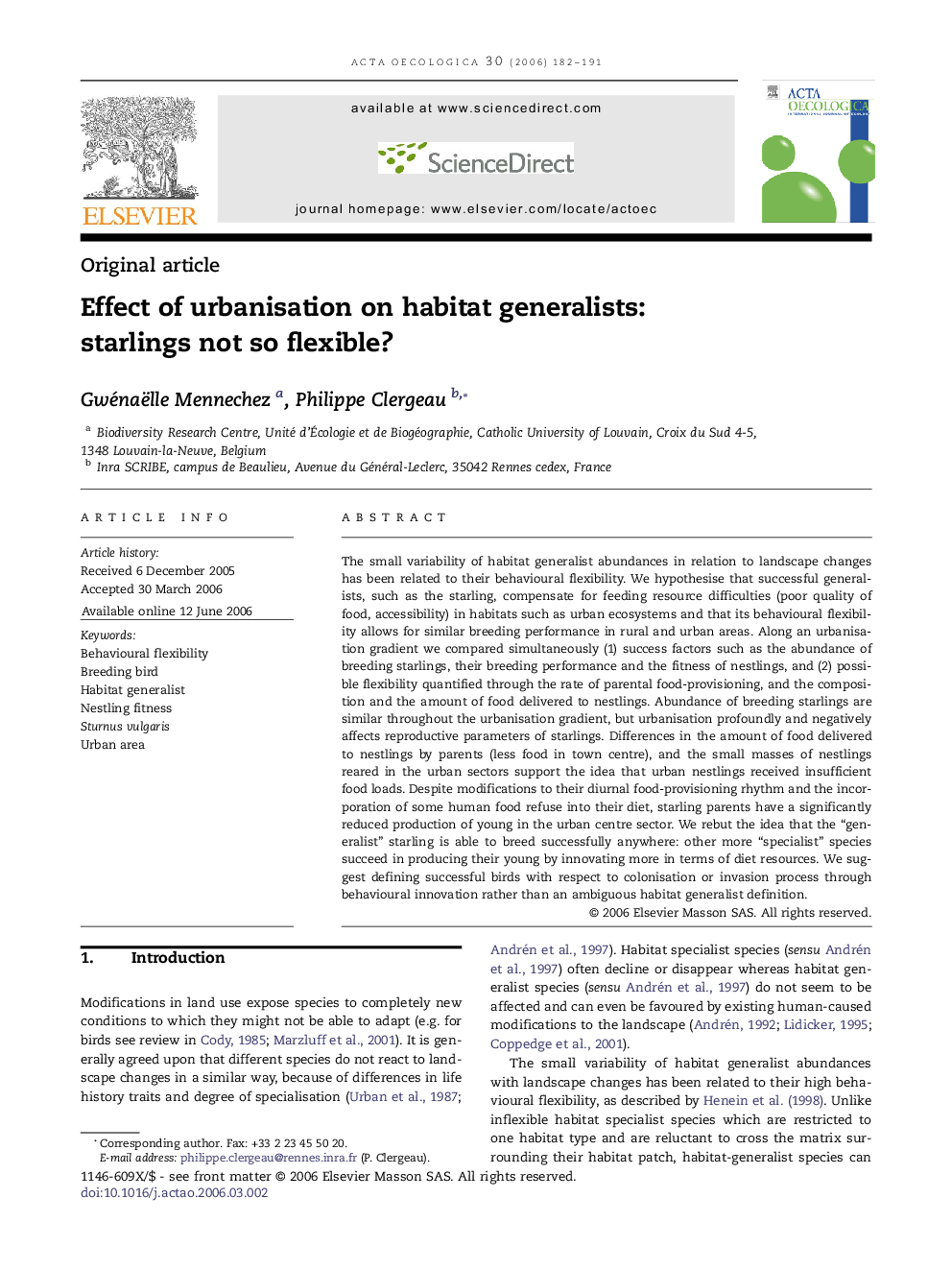| Article ID | Journal | Published Year | Pages | File Type |
|---|---|---|---|---|
| 4381636 | Acta Oecologica | 2006 | 10 Pages |
Abstract
The small variability of habitat generalist abundances in relation to landscape changes has been related to their behavioural flexibility. We hypothesise that successful generalists, such as the starling, compensate for feeding resource difficulties (poor quality of food, accessibility) in habitats such as urban ecosystems and that its behavioural flexibility allows for similar breeding performance in rural and urban areas. Along an urbanisation gradient we compared simultaneously (1) success factors such as the abundance of breeding starlings, their breeding performance and the fitness of nestlings, and (2) possible flexibility quantified through the rate of parental food-provisioning, and the composition and the amount of food delivered to nestlings. Abundance of breeding starlings are similar throughout the urbanisation gradient, but urbanisation profoundly and negatively affects reproductive parameters of starlings. Differences in the amount of food delivered to nestlings by parents (less food in town centre), and the small masses of nestlings reared in the urban sectors support the idea that urban nestlings received insufficient food loads. Despite modifications to their diurnal food-provisioning rhythm and the incorporation of some human food refuse into their diet, starling parents have a significantly reduced production of young in the urban centre sector. We rebut the idea that the “generalist” starling is able to breed successfully anywhere: other more “specialist” species succeed in producing their young by innovating more in terms of diet resources. We suggest defining successful birds with respect to colonisation or invasion process through behavioural innovation rather than an ambiguous habitat generalist definition.
Related Topics
Life Sciences
Agricultural and Biological Sciences
Ecology, Evolution, Behavior and Systematics
Authors
Gwénaëlle Mennechez, Philippe Clergeau,
